It is now the dead of winter in the south, the relatively short stretch of time when we might experience snow and ice. Recently we’ve had a string of cold days with even a few inches of snow to decorate the woods and help clear out weakened branches the trees no longer need.
On my drives in the mountains, I’ve noticed times when the tops of the mountains are dusted in white, but only on one side of the mountain. Or I’ll see glittering, silvery skeletons of trees on distant ridges with no obvious snow underneath them.

I’ve always been told this was hoar frost, so I began to wonder:
What exactly is hoar frost?
Well, it turns out that what I’ve been seeing is likely rime ice, not hoar frost, though even meteorologists have difficulty telling them apart since the difference is all in HOW they’re formed, not as much the final result.
Rime ice forms when a dense fog or mist comes into contact with a surface that’s below freezing temperature. The fog freezes on contact and builds up over time. Low clouds skimming over the top of the mountain can form rime ice as well.
Hard rime ice occurs when fog or clouds combine with the temperature dropping to between 17-28 degrees along with high winds. The frozen fog builds on branches in the direction of the wind. These beautiful pictures were taken by Kevin Croom at Black Rock Mountain State Park:
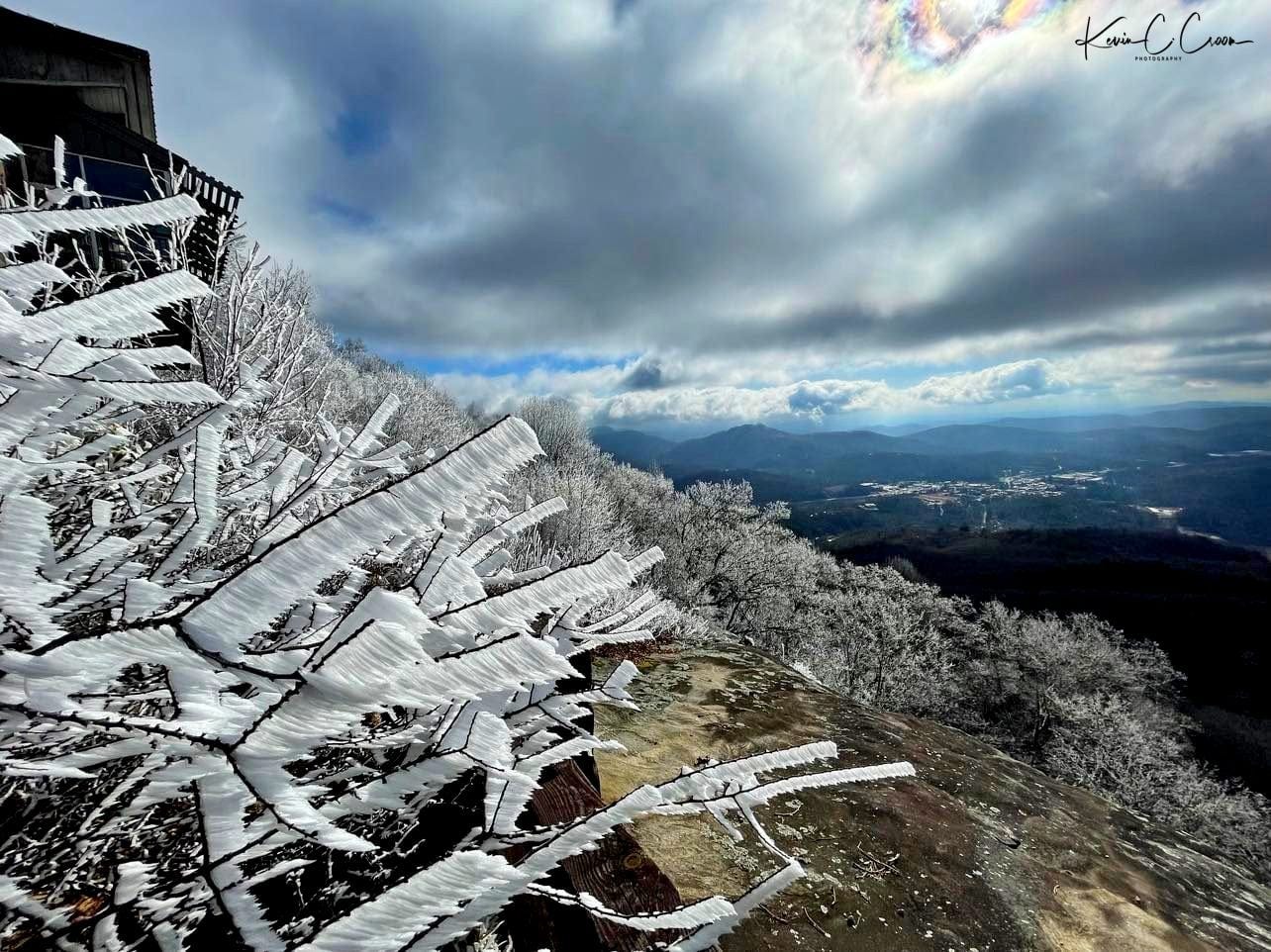
You can see in these photos the direction the wind was blowing as the frozen fog built up on the leeward side.

The ice is very dense but also fragile. Because of this, it generally doesn’t do much damage to tree limbs and branches.
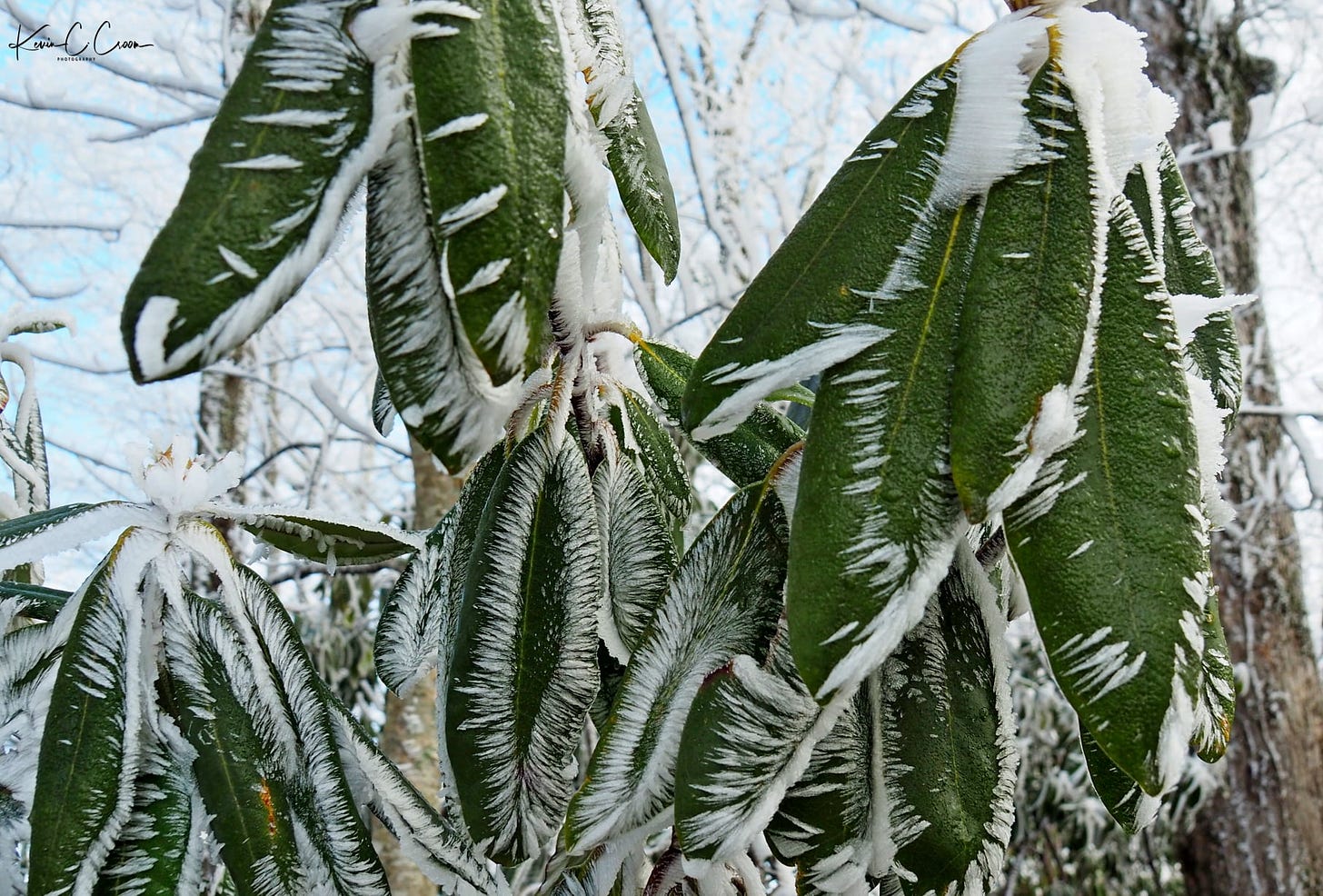
Soft rime ice, on the other hand, also forms from freezing fog but without wind present. In these cases, it forms as delicate, spiky needles.
The sugary crystals of soft rime ice are much less dense than hard rime and are often confused with hoar frost.
Hoar frost does not form under foggy or cloudy conditions. Instead, it happens on cold, clear nights and can be thought of more like frozen dew. It forms when water vapor comes into contact with a frozen surface. Water vapor is a gas, so when hoar frost forms, the moisture in the air skips the water droplet phase and crystalizes onto surfaces. It needs calm air to form.
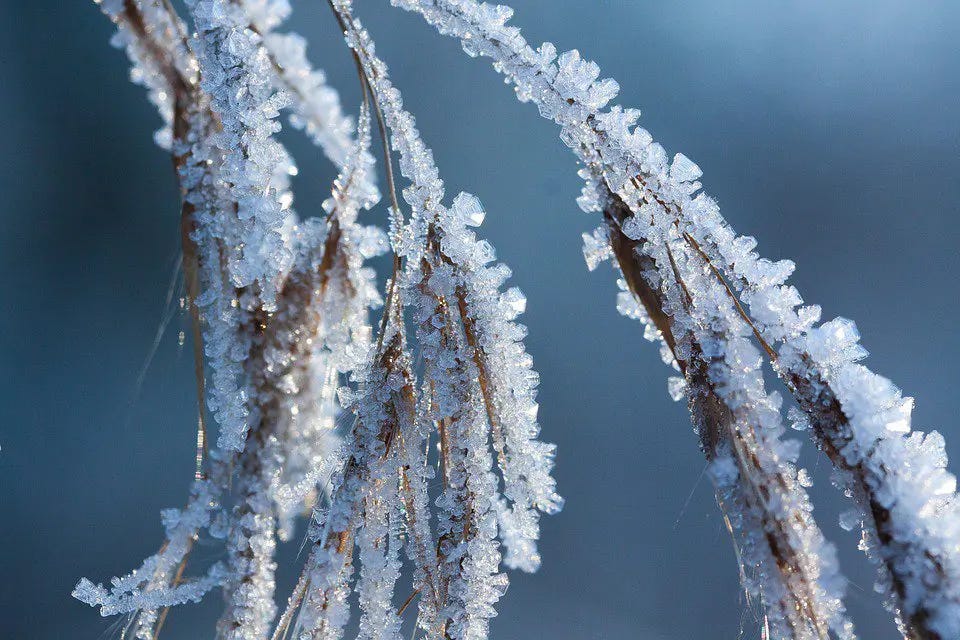
Hoar frost is similar to regular frost and is formed the same way. But with hoar frost the frost grains have grown larger and look “hoary”, an Old-English word that means “showing signs of old age.” Thus, trees covered in hoar frost look more like old men with flowing beards than a tree with simple frost stubble.

If you want to look for hoar frost, find an unfrozen creek or pond and look for the exposed plants nearby on a freezing morning. Hoar frost can also form in man-made environments, such as your freezer, when moisture is drawn out of the air and crystallizes onto your frozen meat and ice cream.
Telling the difference between rime ice and hoar frost is hard because both are so visually similar to each other that even meteorologists have difficulty telling them apart. The easiest way is to simply know the conditions under which they formed – was there fog, or was it a clear night? Was there wind or was it calm?
Another interesting and much rarer ice phenomenon is hair ice, which forms on dead branches and looks like curly tendrils of frozen hair.
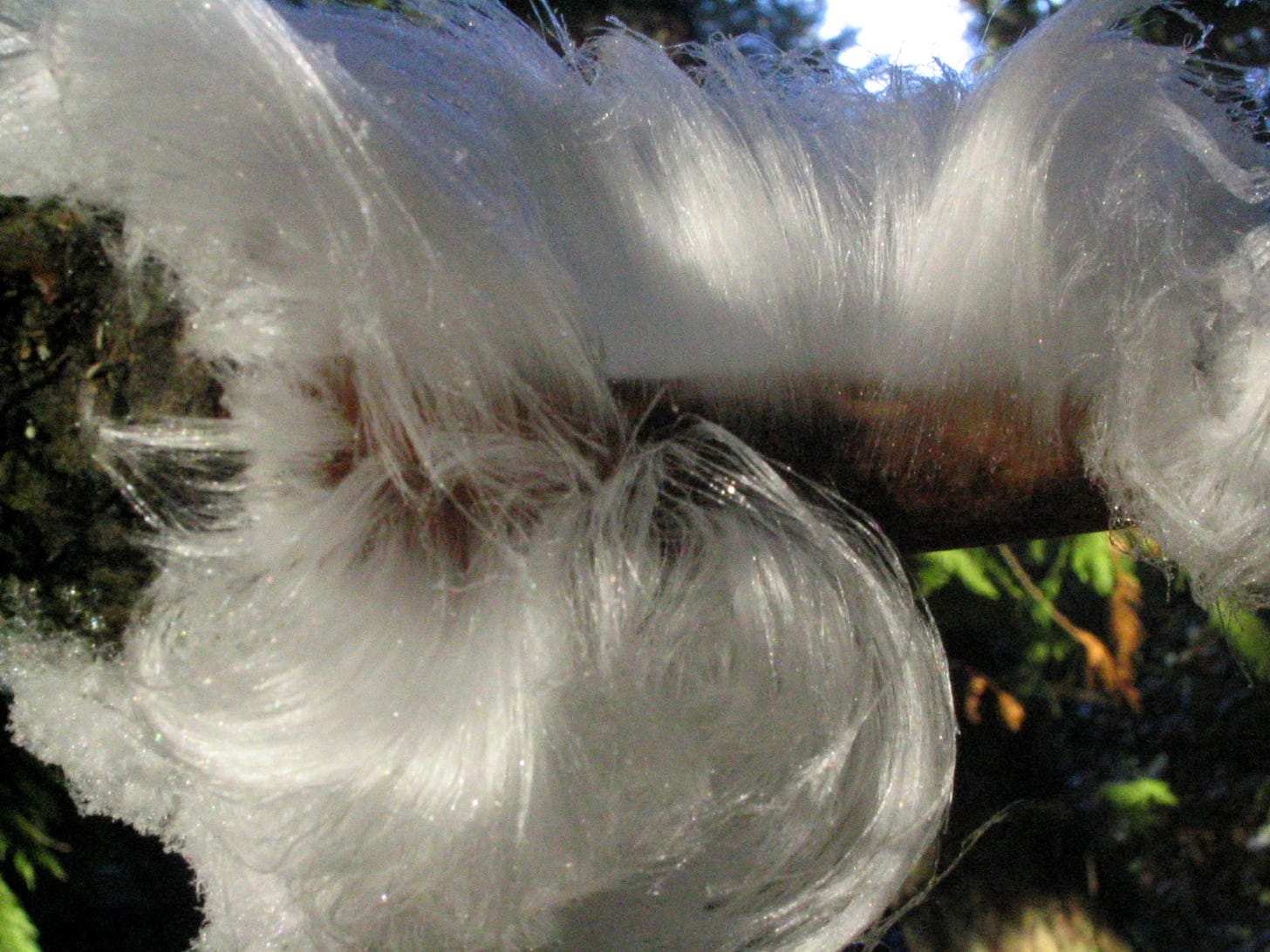
You’ll only find hair ice in broadleaf forests between latitudes 45-55 degrees north, which in North America is the far northern U.S. and southern Canada.
Scientists discovered in 2015 that hair ice forms with help from a mushroom that allows water to move through it and crystallize into long thin hairs. The hairs form overnight and melt as soon as they’re touched by sunlight.
Hoar frost, rime ice, and hair ice are nature’s way of creating ice sculptures hidden away in the forest, sometimes only seen by the deer and squirrels. It makes me glad that we humans have the capacity to appreciate this beauty when we see it.
Weird Nature of the Week
Ever since I’ve seen this video, I look at the moon differently…

Detritus
The North Georgia Hiking & Adventure group on Facebook is a great place to learn about places to hike or to vicariously enjoy other people’s adventures. It’s where I came across Brian Johnson’s and Kevin Croom’s cool pictures.
The Snowfest ice and snow carving contest starts today in Michigan.
Check out this massive ice disk that formed in Westbrook, Maine
Snow rollers are nature’s snowballs
What sorts of cool ice phenomena have you seen? Leave a comment - I’d love to hear from you!




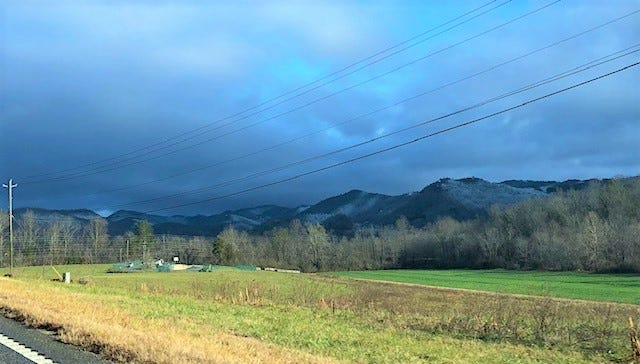
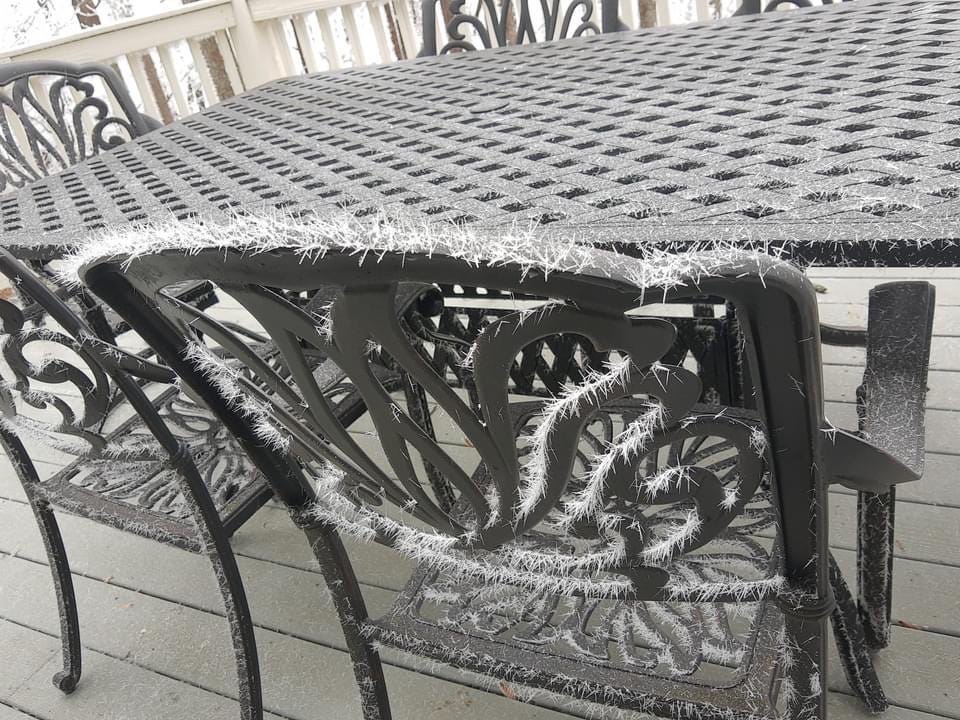
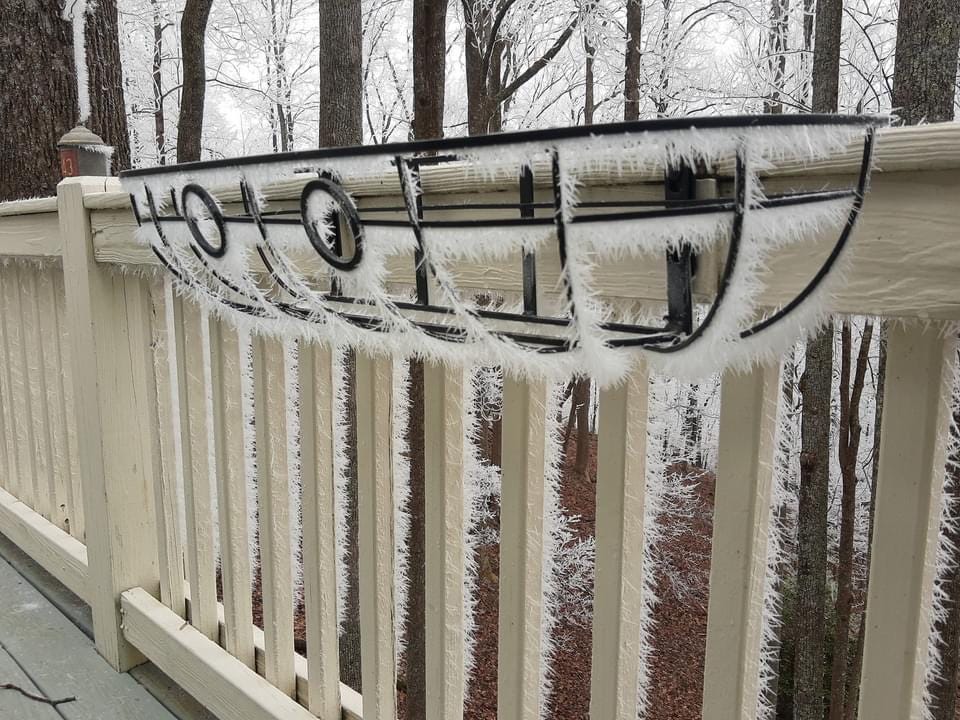

I’ve read the term “hoar frost” in books but never gave it much thought. Great read!
Very cool Heather. I never knew what it was called. Your blogs are very educational.